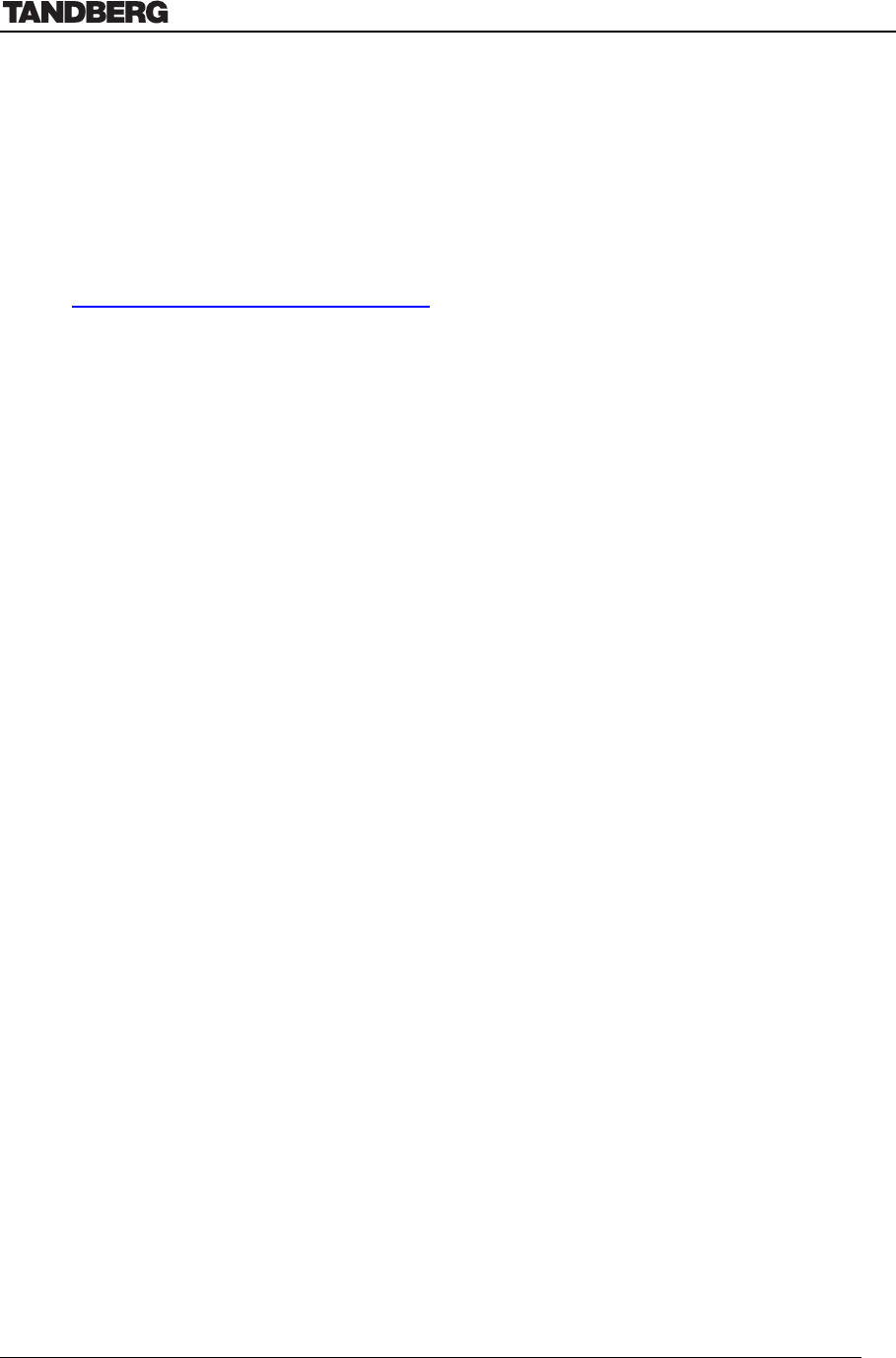
Technical Description of TANDBERG Gateway with software version G2
D13192 Rev. 02 25
4.6 System Management
TANDBERG provides a comprehensive set of management tools, and is committed to the use of
standards-based tools.
The TANDBERG Gateway can be managed in many ways:
The internal web server allows for remote control of the TANDBERG Gateway using a
web interface from anywhere on the LAN/WAN/Internet (open browser
http://TANDBERG Gateway-ipaddress
)
The Application Program Interface (API) allows for connecting a computer directly to
the system via the RS232 port or from anywhere on the LAN/WAN/Internet via Telnet
or FTP.
The TANDBERG Management Suite (TMS) may also be used to manage the system and
the TANDBERG Scheduler may be used to schedule conference meetings (Optional).
4.6.1 Ethernet/LAN Interface
There are two Ethernet/LAN interfaces on the TANDBERG Gateway, of which only one is
currently in use. The LAN interface supported on the TANDBERG Gateway is 10base-T and
100base-T compatible, and is used for H.323 conferences as well as management features of the
TANDBERG Gateway, such as connecting to the internal web-server, Telnet and FTP-server.
The system supports the following settings of this interface:
• Auto The TANDBERG Gateway will auto-detect the speed/duplex on the LAN
• 10/Half The TANDBERG Gateway will connect to the LAN using 10Mbps
speed/Half Duplex
• 10/Full 10 Mbps speed/Full Duplex
• 100/Half 100 Mbps speed/Half Duplex
• 100/Full 100 Mbps speed/Full Duplex
‘DHCP’ (Dynamic Host Configuration Protocol) can be selected when a DHCP server is
present. When using DHCP, IP-address and IP-subnet mask and IP gateway are not used since
the DHCP server assigns these parameters.
If ‘Static’ is selected, the system’s IP-address and IP-subnet mask must be specified in the IP
configuration menu.
4.6.2 Platform Requirements
The management tools are based on standard protocols, obviating the need for special programs
running on the management computer.
The management computer may be any computer running a standard operating system (i.e. the
management computer may be a Personal Computer running the Windows 95/98/2000/NT


















